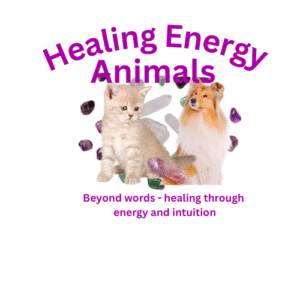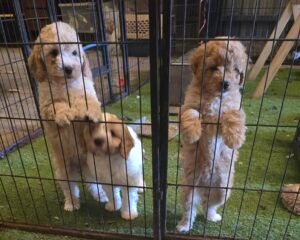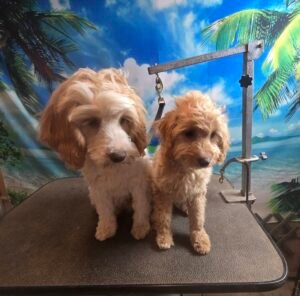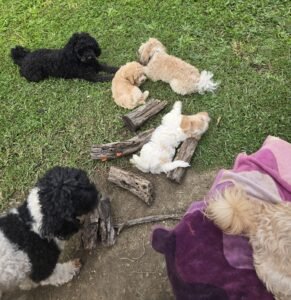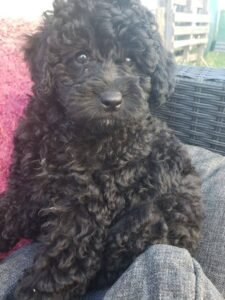Building Resilient Puppies: How Modern Behavioural Science Shapes Confident Companions
Modern dog training has evolved far beyond simple obedience. Today, we understand that the key to a well-adjusted adult dog lies in what happens before twelve weeks of age — during the critical socialisation window. The focus is no longer on “exposing puppies to everything,” but rather on teaching them how to think, recover, and adapt when faced with new experiences.
For breeders and early trainers, this shift means rearing litters in a way that creates emotionally intelligent, resilient, and optimistic dogs.
From Obedience to Emotional Intelligence
Traditional training once focused on control and compliance. But science-based frameworks such as Grisha Stewart’s Behavior Adjustment Training (BAT) and Leslie McDevitt’s Look At That (LAT) have rewritten the playbook. These approaches prioritise agency, curiosity, and emotional regulation — giving puppies tools to handle novelty calmly rather than react impulsively.
BAT encourages dogs to observe, assess, and make choices.
LAT reinforces calm observation: “See something new — look at it — good things happen.”
Applied to young puppies, this means:
- They’re not forced into interactions but invited to approach at their own pace.
- They learn to recover from mild stress, not avoid it.
- They build positive associations with change — forming the emotional muscle memory for resilience.
Starting Early: The Resilience Curriculum (Weeks 3–10)
Forward-thinking breeders begin these lessons early — as soon as puppies are mobile and sensory-aware.
Here’s how modern socialisation looks in practice:
Week | Focus | Example |
3–4 | Gentle handling & sensory play | Different surfaces, sounds, mild human contact |
4–5 | Introduce novelty | Soft toys, movement, gentle sound enrichment |
5–6 | Problem-solving & choice | Low obstacles, tunnels, controlled exploration |
6–7 | Mild challenge & reward | Confidence courses, new humans, calm observation |
7–8 | Social learning | Pair calm adult dogs, modelled exposure |
8–10 | Transition to family life | Car rides, short outings, structured LAT games |
Each session builds curiosity instead of fear. Puppies learn that novelty predicts reward and recovery — not overwhelm.
Roxy’s Road-Trip: Resilience in Action
At five months old, Roxy had her first long drive north to meet her new family — a three-hour trip filled with new sensations, environments, and strangers.
The setup
Roxy travelled calmly in her crate beside her older half-sister. No fussing, no pacing — just quiet curiosity and observation.
The challenge moment
Halfway into the trip, they stopped at a roadside rest area. A truck driver approached — large, loud, and unfamiliar. Roxy barked once, twice, then looked back at her handler.
“Oh look, Roxy, a stranger — he’s fine.”
A handful of treats scattered on the ground, calm voice, no drama. Roxy sniffed, ate, and moved on — perfect LAT behaviour. Her sister’s neutral reaction reinforced the message: this wasn’t a threat, just another interesting human.
The service-station test
Three hours later at a bustling service centre — people, traffic, diesel engines, “bin chickens” flapping nearby — Roxy held steady. She barked once at the ibis, then relaxed and focused. That’s what resilience looks like: curiosity followed by recovery.
Meeting her new family
Her new family arrived with calm, grounded energy. They were given a small treat pouch — cheese, kibble, and cold meats — to create positive first associations. Within minutes, Roxy was stretched across the young boy’s lap, tail wagging, licking his face. By the time they left, she was asleep in the back seat, head on his knee — total contentment.

Settling In: Continuity and Calm
Hours later came the message every breeder loves to receive:
“She was so good in the car, sat and relaxed the whole trip.
Explored the backyard and now resting in her new bed 🥰 (along with her bear and blanket with familiar smells).”
Roxy’s calm transition from whelping pen to family home proves how effective structured early learning is. Familiar scents from her blanket, gentle handling history, and positive prediction bias made her confident enough to adapt without distress.

The Takeaway: Raising Puppies Who Can Handle Life
Roxy’s story isn’t luck — it’s neuroscience in action.
When breeders and trainers apply modern behaviour principles from four weeks onward, they create puppies who:
- Recover quickly from surprises
- Handle travel and novelty with ease
- Build trust through choice and predictability
- Form lifelong confidence in new environments
In short, they become resilient thinkers — dogs who don’t just survive change, but thrive in it.
When Science Meets Reality: The Human Factor
It’s tempting to believe that a perfectly bred, beautifully raised puppy will thrive anywhere — but that’s not true. The environment they go into is just as important as the one they’re born in.
Roxy and her sister Cuddles are perfect examples of what happens when early socialisation meets empathy and calm energy. Both girls transferred into loving, balanced homes — Roxy after a three-hour trip full of new experiences, and Cuddles locally — each adapting with ease, sleeping soundly their first night, and connecting instantly with their new families.
Then there’s Patch.
Patch, raised the same way, didn’t get the same chance. Despite his confident start, he landed in a household where anger, punishment, and impatience replaced kindness and consistency. His new owner — unwilling to work with guidance or return him — turned what could have been a success story into a distressing one.
No training method can protect a dog from chronic negativity or aggression. Modern behavioural science tells us that puppies raised with choice, trust, and reward-based systems lose those benefits quickly if exposed to constant fear or frustration. The very resilience we build can be undone by the wrong environment.
The best possible outcome for Patch now is surrender to a shelter where he can be rehomed to someone who understands positive handling — someone willing to rebuild his trust and confidence.
Why This Matters
Every puppy is a product of both nature and nurture. Breeders can shape temperament, early confidence, and problem-solving skills — but once they leave the nest, their emotional wellbeing depends on the humans around them.
This is why ethical breeders don’t just match puppies to families; they educate those families. They screen for emotional compatibility, patience, and willingness to continue positive reinforcement training.
Because when handled with empathy and modern science, you get Roxy and Cuddles.
When handled with anger and control, you risk another Patch.
✨ Modern puppy raising isn’t about exposing them to everything — it’s about teaching them how to handle anything.
The shift: From obedience to emotional intelligence
Modern dog training has pivoted sharply away from dominance theory and “obedience” conditioning. The current science — spearheaded by behaviorists like Patricia McConnell, Suzanne Clothier, Grisha Stewart, and Leslie McDevitt — focuses on emotional regulation, agency, and problem-solving.
When applied to young puppies (especially 3–12 weeks), this means:
- We don’t just “socialize” them to stimuli.
- We teach them how to handle novelty and mild stress — how to recover, explore, and self-soothe.
- The goal is a thinking puppy, not a reactive one.
This has influenced how progressive breeders and puppy raisers structure “early learning curricula” — e.g. Puppy Culture, Avidog, and similar frameworks — all of which borrow principles consistent with BAT and LAT.
🐾 Modern frameworks and their core philosophy
Behavior Adjustment Training (BAT) — Grisha Stewart
- Focuses on giving dogs agency to make choices when faced with something potentially scary.
- Puppies learn that distance, curiosity, and calm observation make scary things go away.
- They practice self-regulation rather than being forced to “face fears.”
Applied to litters:
- Breeders are now setting up low-level challenge scenarios:
e.g., unfamiliar objects, odd noises, or new people at a distance — and then letting the puppy choose how to approach or disengage. - Instead of forcing interaction (“Come meet the vacuum!”), we let the puppy look, assess, retreat, then re-approach on their own timeline.
- Each success builds confidence + optimism bias (“I can handle new things; I have control”).
💡 This develops problem-solving, emotional stability, and the ability to bounce back — traits directly linked to adult resilience.
Look at That (LAT) — Leslie McDevitt
- Designed originally for reactive dogs, but now used in puppy raising to build focus and reduce startle reactivity.
- The puppy learns: “When I see something novel, I look at it → I get a treat → I don’t need to react.”
Applied to early development:
- From ~4–6 weeks onward, you can shape this through classical conditioning:
- Present mild stimuli (new people, dogs, environments, household noises).
- Reward the puppy for calmly noticing — not necessarily approaching.
- Reinforce curiosity and observation over impulsive reaction.
Outcome: Puppies grow up perceiving novelty as a predictor of good things, not fear — forming deep resilience at the neurological level.
Early Learning Programs (4–8 weeks) integrating modern methods
Here’s what this looks like when implemented by breeders who blend science-based handling with BAT/LAT principles:
Week | Developmental Focus | Modern Training Influence |
3–4 weeks | Begin gentle handling, tactile exposure, sound enrichment | Early desensitization, building curiosity not fear |
4–5 weeks | Introduce mild novelty (objects, surfaces, mild sounds) | BAT-style choice: let puppy observe, decide to engage |
5–6 weeks | Controlled “problem-solving” tasks (small barriers, tunnels, novel toys) | Encourages persistence, exploration; models LAT calm observation |
6–7 weeks | Mini obstacle courses, “confidence building” sessions, varied people | Reward curiosity and calmness; reinforce engagement |
7–8 weeks | Pair new experiences with food/play rewards | Classical conditioning to predict positive outcomes from novelty |
8–10 weeks | Transfer training principles to new home environment | New owners continue BAT/LAT micro-exercises to maintain resilience |
🏡 How this affects puppies going to new homes
When a puppy is raised in an environment that uses BAT/LAT-informed socialisation:
- The puppy already knows how to problem-solve (“If something is new, I observe first, not panic”).
- They are habituated to micro-challenges — meaning new owners see fewer fear-based reactions.
- They transfer easily into varied households because they’ve been taught how to learn, not just what to learn.
Owners using the same training language (reinforcing calm observation and voluntary engagement) maintain that momentum — reducing early setbacks like fear periods, leash reactivity, or shutdowns.
⚙️ Key mechanisms behind this success
Mechanism | Why it matters |
Controlled stress inoculation | Builds resilience through mild, recoverable stress. Puppies learn they can cope. |
Agency & choice | Reduces learned helplessness; teaches the pup to think and assess rather than react. |
Positive prediction bias | Novel stimuli = good things happen. Rewires amygdala response to novelty. |
Reinforcement of curiosity | Leads to exploratory behavior — key trait of confident adult dogs. |
This aligns closely with the Resilience model now being discussed in canine behavioral science — similar to “stress inoculation” used in human developmental psychology.
🧩 Integrating this into breeder curricula
If you’re building programs from 4 weeks onward, here’s how you can weave these frameworks in:
- BAT-style exposure:
Let puppies watch new things from a distance. Reward curiosity and recovery. - LAT micro-games:
“See something new → click/treat” sessions — a few seconds each, daily. - Structured novelty challenges:
Rotate tactile, auditory, and visual stimuli daily (soft rattles, fans, umbrellas, slow-moving objects). - Recovery practice:
Short exposure → retreat → return → reward. Builds self-confidence and stress regulation. - Owner transition training:
Send new owners home with a “Resilience Continuation Guide” — outline how to continue LAT-style exercises and reward-based calm curiosity.
✨ In essence
Modern positive training has redefined what “well-socialised” means. It’s no longer “puppy has met 100 people.” It’s “puppy has learned how to cope, recover, and engage with life — calmly, curiously, and confidently.”
And that’s the essence of raising emotionally intelligent, resilient dogs.
Kareema is the owners of Healing Energy Animals where devil dogs, horrible horses and crazy cats are turned into perfect pets using Relationship Animal Training and over 50 years of experience training a wide variety of animals.
Healing Energy Animals provides owners and pet professionals assistance with with common pet behavior training, feeding and grooming issues such as barking, escaping, scratching, aggression and fleas. Kareema consults and writes widely on a range of pet care issues for owners and also assists pet care professionals in setting up and growing their businesses by the provision of customer handling advice, sales and marketing strategies and up to date product information that allows for the differentiation of their pet care business from their competitors.
Healing Energy Animals is an Australian business but operates worldwide via the provision of virtual services.
